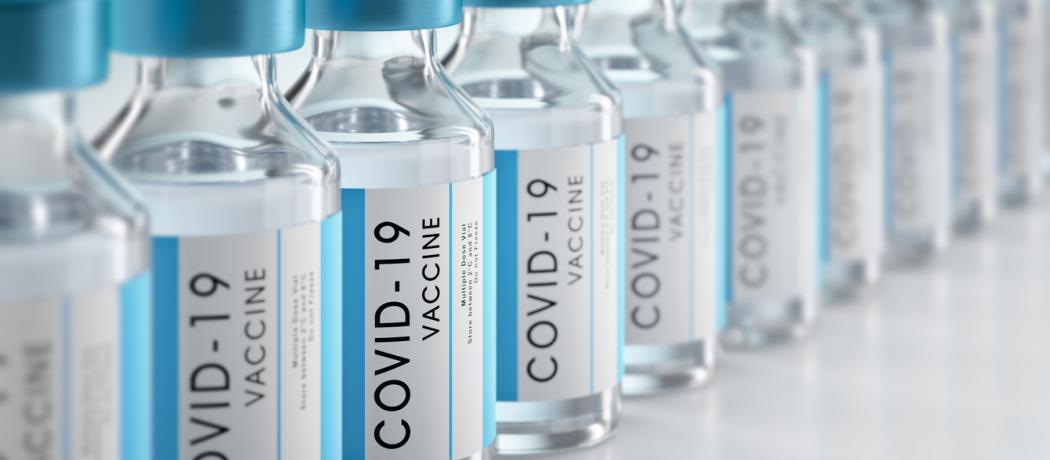Date of writing: 14 February 2021
The British Columbia COVID-19 vaccination program began in mid-December 2020. As of 5 February 2021, close to 150 000 vaccine doses have been administered in BC.[1] Although the two available vaccines at the time of writing (Pfizer and Moderna) demonstrated efficacy and safety through phase-3 clinical trials and are certified by Health Canada, continuing postapproval surveillance to track severe, rare, or unexpected reactions is necessary.
HealthlinkBC (HLBC) is a provincial program that offers an 8-1-1 phoneline for the public to contact a nurse regarding urgent health issues. In April 2020, the HLBC Emergency iDoctors in-assistance (HEiDi) service was established. It is an 8-1-1 line through which nurses can refer callers to physicians for virtual consultations (by phone or videoconferencing).
Since December 2020, HLBC has been receiving calls from individuals who have had sides effects from COVID-19 vaccinations. To alert BC practitioners, here we report three incidences of atypical rash described by recipients of the Moderna vaccine (referred to HEiDi), which occurred 8 to 10 days after vaccination.
Patient presentations
Patient 1. A 40-year-old female received the Moderna vaccine in the left arm on 13 January 2021. She was otherwise healthy except for a previous history of HSV infection for which she took once-daily Valacyclovir. On 22 January 2021, 9 days after receiving the vaccine, she noted a red, well-demarcated, macular rash on her left shoulder at the site of the vaccination, which measured approximately 8 by 15 cm [Figure 1]. The rash was mildly itchy and mildly painful. She had no fever or other associated symptoms. The rash faded after 48 hours and resolved 72 hours after it appeared. She has had no further complaints as of the time of writing.
Patient 2. A 70-year-old healthy female received the Moderna vaccine in the left arm on 21 January 2021. On 29 January she noted a pink, slightly raised, indurated area on the posterior aspect of her arm at the site of the injection [Figure 2]. The area was mildly painful. She had no other systemic symptoms including fever or malaise. The rash resolved within 48 hours and she has had no further sequelae as of the time writing.
Patient 3. A 44-year-old female received the Moderna vaccine on 18 January 2021 in the left arm. On 28 January she noticed a 2 to 3 cm area of erythema near the injection site. This progressed in size over the subsequent 4 days, reaching a size of approximately 8 by 12 cm [Figure 3]. It was not itchy and only mildly painful. She did have some aching pain in the triceps, and this resolved with analgesics. At the time of writing, the rash was beginning to subside.
COVID-arm
In lay media to date, this characteristic rash has been reported in association with the Moderna vaccine, but not with the Pfizer vaccine.[2-3] In the formal reporting of the phase-3 Moderna vaccine trial in the medical literature, 244 cases of a delayed rash characterized by redness, hardness, and tenderness after the first dose, and 68 cases after the second dose, were reported.[4] This is thought to be a “delayed cutaneous hypersensitivity” reaction. Clinically, this rash has a delayed onset, is self-limited in course, does not need treatment, and should not deter the individual from receiving the second immunization dose.
These cases do not need to be reported to the BC Centre for Disease Control or health authority public health offices under the definition of adverse effects following immunization (AEFI).
AEFI reporting and 8-1-1
These patients initially reported their reactions through 8-1-1. This service, staffed with registered nurses, provides a vital safety net for health care throughout BC and is accessible 24 hours a day, 7 days a week. This accessibility makes it the entry point of choice into the health care system for many British Columbians. It is an advice service that directs patients to their family doctor, an emergency department when necessary, and in many cases helps avoid unnecessary use of resources. The augmentation of this service with virtual physicians from the HEiDi program since April 2020 added convenience for callers (the ability to receive medical advice) and interprofessional collaboration between nurses and physicians to support optimal tele-triaging of callers to appropriate follow-up services.
Given its accessibility, the 8-1-1 service plays a key role in the identification and reporting of COVID-19 vaccine adverse events. It can be one of the effective provincial repositories for sharing such information, and subsequent sharing of up-to-date information with the BC Centre for Disease Control (BCCDC) and practitioners across the province. The BCCDC has a reporting form for AEFI[5] and 8-1-1 can supplement this monitoring process, ensuring appropriate reporting and sharing relevant information with health professionals. Severe reactions, such as anaphylaxis, prolonged rashes (> 10 days), reactions requiring urgent medical attention or hospitalization, neurological symptoms, or unusual clustering of symptoms should be reported by clinicians to the BCCDC using the BCCDC AEFI form.[5]
We invite patients to call their care providers, the clinic where they received their immunizations, or 8-1-1 if they have unusual or severe postvaccination symptoms. Clinicians may choose to report through the appropriate channels—either BCCDC or direct their patients to call 8-1-1.
With broad and rapid information sharing, we will be able to build a robust database for future guidance in the management of these reactions and ensure continued safety of the COVID vaccines introduced in BC.
—Robert Anthony, MD
Clinical Instructor, Department of Emergency Medicine, UBC
Emergency Physician, VGH, UBC Hospital
—Kendall Ho, MD, FRCPC
Professor, Department of Emergency Medicine, UBC
Medical Director, HLBC HEiDi Program
References
1. BC COVID-19 Dashboard. Accessed 7 February 2021. https://governmentofbc.maps.arcgis.com/apps/opsdashboard/index.html#/11bd9b0303c64373b5680df29e5b5914.
2. Somos C. Rare ‘COVID arm’ phenomenon a harmless immune response to vaccination, experts say. CTV News. 6 February 2021. Accessed 7 February 2021. www.ctvnews.ca/health/coronavirus/rare-covid-arm-phenomenon-a-harmless-immune-response-to-vaccination-experts-say-1.5298613.
3. Weise E. ‘COVID arm’ rash seen after Moderna vaccine annoying but harmless, doctors say. USA Today. 27 January 2021. Accessed 7 February 2021. www.usatoday.com/story/news/health/2021/01/27/covid-arm-moderna-vaccine-rash-harmless-side-effect-doctors-say/4277725001/.
4. Baden LR, El Sahly HM, Essink B, et al. for the COVE Study Group. Efficacy and safety of the mRNA-1273 SARS-CoV-2 vaccine. N Engl J Med 2021;382:403-416. https://www.nejm.org/doi/full/10.1056/NEJMoa2035389
5. BC Centre for Disease Control. Adverse events following immunization. Accessed 7 February 2021. www.bccdc.ca/health-professionals/clinical-resources/adverse-events-following-immunization.
This post has been peer reviewed by the BCMJ Editorial Board.


